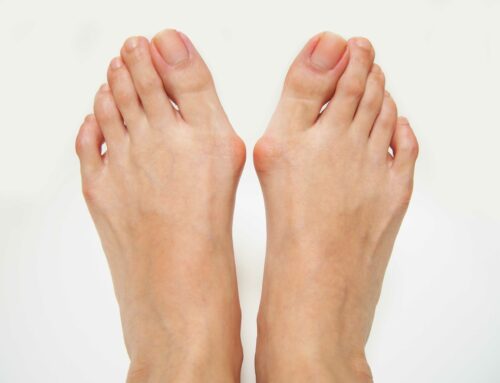What is a Bunion and What Causes Them?
A bunion is a bony bump that usually forms on the main big toe joint, right at the base of the big toe. The big toe points more and more toward the toes of the same foot. It is a common foot deformity that both men and women can suffer from. The odds of getting a bunion are greater for runners 36 and older. Bunion surgery has transformed over the past few years, so don’t let the horror stories keep you in pain.
An imbalance in the foot’s muscles, ligaments, and tendons causes bunions. The imbalance can result from ill-fitting footwear, genetics and other factors that might affect the foot’s delicate balance. High heels are a strong culprit, and they may be one reason that bunions are ten times more common in women.
Bunion Surgery Options and Treatments
Bunion Surgery Options Today from The Bunion Cure
Bunion surgery is infamous for horror stories. People avoid it like the plague, and some even resort to home bunion fixes. But not all bunion surgeries are the same. Overall, there is a big difference when it comes to the patient experience.
There are 40+ types of surgeries available to correct bunion problems, and they all fall into two main categories. Compare the two types of foot surgery here.
1) Conventional Open Foot Surgery
Most conventional open foot surgery comes with long-term pain and up to half a year of recovery time.
MPJ fusion or a Lapidus bunionectomy, for example, may require a minimum of 3 months to return to normal activities and regular shoes. Osteotomy, or bone cut, is another common surgery that treats bunions. This holds the bones together and keeps them in the proper place with two screws. This procedure also needs at least two months to return to your regular shoes and daily activities.
These procedures may do the job in the long-run, they involve huge incisions, often a great deal of pain, hardware attached to your foot skeleton, higher expenses , and months of staying off your feet.
, and months of staying off your feet.
2) Minimally Invasive Bunion Surgery
If treating your bunion with the fastest recovery time and least amount of pain is important to you, this might be the option for you.
The minimally invasive procedure started at The Bunion Cure is different from all the others who claim to be “minimally invasive.” Because we do not expose the entire bone and there is no internal hardware. We create small incisions in the foot using local anesthesia. Then we remove the bunion by creating tiny fractures. Finally, we realign the bones.
After the surgery, we wrap your foot in a soft cast, using gauze to protect against impacts and strains. Most can walk, go to work, or even drive a car right after the surgery.
We are pioneers in this Minimally Invasive Bunion Surgery. We understand the busy schedules of our clients. Therefore, our surgery takes only around an hour and a half, which includes pre-op and post-op. Our Minimally Invasive Bunion Surgery typically has a quick recovery time because of the small skin incision used. Therefore, it heals much faster than large incisions made by traditional surgery procedures.
Conclusion
You shouldn’t have to worry about foot pain or fear the barbaric procedures of the past to get relief from surgery. Allow The Bunion Cure to remove your bunion with our pioneered Minimally Invasive Bunion Surgery. Schedule a free consultation today.
Free Consultation. Same Day Surgery.
Book Your Appointment now or call 720-710-5298 to talk with a Bunion Cure team member.
Common Questions About Bunion Surgery
What is a bunion?
A bunion (Hallux Valgus) is a red bump that forms on the inside of the foot at the big toe joint. It often coincides with the big toe angling in toward the other toes. The condition is caused by an imbalance in the muscles, tendons and ligaments in the foot. Bunions can be removed by a quick outpatient procedure similar to a dentist visit.
A bunion deformity is made up of three parts. The physician or doctor will analyze your foot during the medical consultation and point out to you which part, if any, or the entire part of your bunion deformity.
- Increase in the size of the metatarsal head, which causes bumps on that part of the foot.
- Deviation of the first metatarsal bone toward the midline of the body, which causes the metatarsal head to protrude and therefore makes the bump more visible.
- The big toe moves toward the little toe and pushes against the second toe.
Why should I treat my bunion?
When a bunion is left untreated, it will move and affect other parts of your feet, legs, and back. There is a high probability that a bunion affects the other toes because it pushes them out of alignment.
Toenails may become ingrown, corns and hammer toes might form if a bunion goes untreated.
What type of surgery do I need?
The kind of surgery needed is dependent on the bunion type and the parts of the bunion deformity the patient wants to correct.
Various types of techniques used are
- Simple Bunionectomy – It involves the removal of the bump of the increased metatarsal head
- Bunion with Osteotomy – This technique employs the removal of bump and causes the toe and the metatarsal to straightens out
- Tailor’s Bunion – This removes the bump of the enlarged fifth toe.
Learn more about the minimally invasive technique here.
LinkedIn Profile Link: https://www.linkedin.com/in/jordan-sullivan-501a09141

Reviewed By Dr. Sullivan
Dr. Jordan Sullivan, DPM, is a board-certified podiatrist at Northwest Surgery Center specializing in minimally invasive foot and ankle procedures. He’s passionate about helping patients get back on their feet faster with less downtime.
Learn more about Dr. Sullivan here.





